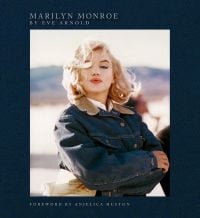[Text taken from the Press Release from the Podbielski Contemporary, originally in Italian, translated to English using Google Translate]

Rare Special Editions available from ACC Art Books – More Information
LE DONNE DI EVE
EVE ARNOLD – solo exhibition
curated by Francesca Filippini Pinto
Opening Thursday 27 March 2025 | h 6.30 pm – 9 pm
“I am not a radical feminist because I don’t believe the siege mentality works. But I do know something about the problems and injustices of being a woman, and over the years the women I have photographed have spoken to me about themselves and their lives. Each had her own story to tell, uniquely female, but also uniquely human.” – Eve Arnold
In her first monograph “The unretouched woman” published in 1974 – at the age of 62 and with a career of over 20 years behind her – Eve Arnold (1912-2012) presents herself like this, choosing to tell with her images women seen through the eyes of a woman.
The selection proposed by the Podbielski Contemporary gallery retraces this path in summary through images of women from all walks of life, in various regions of the world, often captured in moments of introspection, without being posed and without retouching. From New York to London, from Cuba to the Middle East, from the interiors of Harlem to the sets of Hollywood, Eve’s lens investigates in a non-invasive way and with deep empathy. Extremely aware of how much the figure of the photographer has
impact on the people she portrays, Eve tries to “step aside” to allow the subject to emerge. This ability to empathize with the subjects of her images and to establish a dialogue with them based on honesty and frankness, makes her capable of photographing in the most disparate situations.
Born in 1912 in Pennsylvania, the daughter of Russian Jewish immigrants, Eve Arnold approached photography as an adult and at the end of the Second World War, taking advantage of the shortage of male labor, she found work in a Kodak photographic processing plant. Within a few months, she became the plant’s director and, shortly after, was sent to open a new one in Chicago, showing great managerial skills, and at the same time learning the secrets of photographic printing. In the meantime, the war ended, her husband returned from the front and Eve quit her job to devote herself to the house and family in New York. However, her passion for photography did not abandon her and her husband encouraged her to continue. Two weeks after the birth of her son, Eve was already on the streets taking photographs and enrolled in the photography school of Alexei Brodovitch, then art director of Harper’s Bazaar. She photographs a parade of black models in Harlem and the Picture Post dedicates eight pages to these images
that portray a reality that none of the photographers of the time (almost exclusively men and whites) had ever remotely thought of documenting. From here the turning point that leads her to join the Magnum agency as the first female photographer admitted to be part of it: the photographs of Harlem come to the attentive gaze of Robert Capa, one of the founders of the prestigious agency, which Eve is invited to join in 1951.
The agency, founded in Paris in 1947 by photography giants such as Cartier-Bresson, Capa and Seymour, was based on a principle that was innovative for the time: photographers, not publishers, owned the copyright to the images they took. This gave the agency the freedom to choose the so-called ‘assigned’ jobs and to maintain some control over the way in which the photographers’ work was used and distributed. Membership in Magnum opened up a world of possibilities for Eve Arnold, giving her the opportunity to document realities all over the world – from potato pickers on Long Island to the Queen of England, from bars in Cuba to Hollywood stars, from protest marches in Virginia to Malcolm X.
But it is always to women that her gaze returns – femme fatales, mothers, women at work, ordinary women and celebrities such as Marlene Dietrich and Marylin Monroe – motivated by the desire to understand what moves them, unites them and at the same time makes them so profoundly different and unique. Unlike the photographers of the time, for whom women were often an “object” to be framed in stereotyped and idealized iconographies, Eve searches for the person behind the image. Under Eve’s lens, Marlene Dietrich is not a retouched and unattainable star, but a woman who does a job.
Likewise, the Marylin Monroe that Eve presents to us is not the sexy and provocative icon of the magazines, but a real woman, with her doubts and insecurities, the anxiety of not feeling up to the role (like on the set of “The Misfits”) and the desire to improve herself (the famous photo of Marylin reading James Joyce). Being a woman, in a predominantly male sector like documentary photography (then as now), allows Eve to approach subjects that are unattainable for others (her images of women in the Harems in Abu Dhabi offer a real look “behind the veil”) and, at the same time, to capture nuances with a sensitivity that goes straight to the essence of people.
“If the photographer cares for the people in front of his lens and is compassionate, much is revealed. The real tool is the photographer, not the camera.” – Eve Arnold
[Text taken from the Press Release from the Podbielski Contemporary, originally in Italian, translated to English using Google Translate]
Please log-in or create an account to see your recent items.